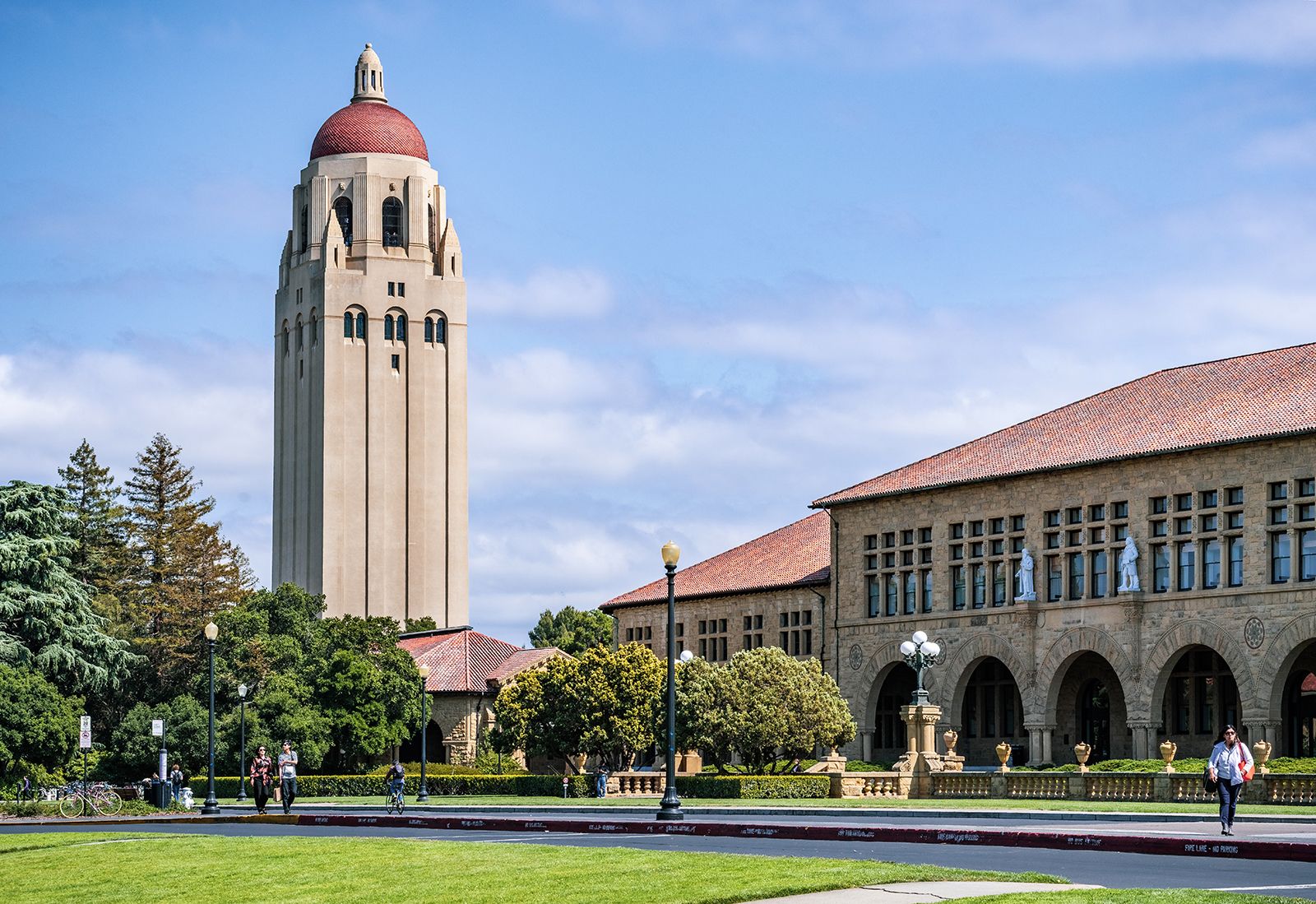
Stanford University, nestled in the heart of Silicon Valley in Stanford, California, is renowned for its academic prowess, innovative spirit, and entrepreneurial culture. Founded in 1885, Stanford has consistently ranked among the top universities in the world, attracting students from all corners of the globe.
This guide aims to provide prospective students with comprehensive insights into what it takes to study at Stanford, covering admission requirements, application processes, financial aid, campus life, and frequently asked questions. Whether you’re an aspiring engineer, scientist, artist, or entrepreneur, this guide will help you navigate your path to becoming a part of the Stanford community.
Why Stanford University?
Choosing Stanford means immersing yourself in an environment that fosters creativity, innovation, and collaboration. With a rich history of producing Nobel laureates, tech innovators, and influential leaders, Stanford offers unparalleled opportunities for personal and professional growth. The university’s proximity to Silicon Valley provides a unique advantage for students interested in technology, entrepreneurship, and research.
Admission Requirements
Stanford’s admissions process is highly selective, seeking students who excel academically and exhibit a strong passion for their interests. Here’s an in-depth look at what Stanford looks for in its applicants:
- Academic Excellence: Stanford expects a robust academic record with high grades in challenging courses. This includes Advanced Placement (AP), International Baccalaureate (IB), honors, or other advanced courses. A strong academic performance is crucial, but Stanford also values intellectual vitality and curiosity.
- Standardized Tests: While Stanford has adopted a test-optional policy in response to the COVID-19 pandemic, competitive SAT or ACT scores can still strengthen your application. Historically, successful applicants score between 1500-1600 on the SAT and 34-36 on the ACT. If you choose to submit your scores, ensure they reflect your academic strengths.
- Letters of Recommendation: Stanford requires two recommendations from teachers and one from a school counselor. These letters should provide a comprehensive view of your academic abilities, character, and contributions to the school community. Strong recommendations can offer valuable insights beyond your academic records.
- Extracurricular Activities: Stanford looks for students who demonstrate leadership, initiative, and a deep engagement in extracurricular activities. Whether it’s sports, arts, community service, or other interests, your involvement and achievements in these areas are essential. Stanford values well-rounded individuals who bring diverse talents to the campus.
- Personal Essays: The application includes personal essays that are a critical part of your application. Stanford’s supplemental essays ask for reflections on your life experiences, interests, and goals. Crafting thoughtful and authentic essays can significantly enhance your application by showcasing your personality and aspirations.
Application Process
Applying to Stanford requires careful preparation and attention to detail. Here’s a step-by-step guide to the application process:
- Choosing an Application Platform: Stanford accepts the Common Application and the Coalition Application. Select the platform that best suits your preferences and needs. Both platforms require similar information but have different formats and additional questions.
- Deadlines: Stanford offers two application plans:
- Restrictive Early Action: The deadline is November 1. This non-binding option allows you to apply early and receive an admission decision by mid-December while still applying to other colleges, except those with Early Decision or Early Action programs.
- Regular Decision: The deadline is January 5. This is the standard application timeline, with decisions released by early April.
- Supplementary Materials: In addition to your main application and essays, you may submit supplementary materials such as artistic portfolios, research papers, or additional letters of recommendation. These materials can provide further evidence of your talents and accomplishments.
- Interviews: While not mandatory, Stanford offers optional alumni interviews. If offered, it’s a valuable opportunity to learn more about Stanford and to discuss your interests and goals. The interview is a chance to demonstrate your enthusiasm for the university and to ask questions about the Stanford experience.
Useful Links
Scholarships and Financial Aid
Stanford is committed to ensuring that all admitted students can afford to attend, regardless of their financial background. Here’s a detailed look at the financial aid options and how to apply:
- Need-Blind Admissions: Stanford’s need-blind admissions policy means that your financial situation does not impact your chances of admission. This policy applies to U.S. citizens, permanent residents, and international students alike.
- Meeting Full Financial Need: Stanford guarantees to meet 100% of the demonstrated financial need for all admitted students. The financial aid package is designed to cover the difference between what your family can afford and the total cost of attendance.
- Types of Aid: Financial aid packages at Stanford include scholarships, grants, and work-study opportunities. Unlike many institutions, Stanford does not include loans in its financial aid packages, ensuring that students can graduate with minimal debt.
- Applying for Financial Aid: To apply for financial aid, students must submit the CSS Profile and the Free Application for Federal Student Aid (FAFSA). International students should complete the International Student Financial Aid Application (ISFAA). Detailed instructions and deadlines are available on the Stanford Financial Aid Office website.
Useful Links
Campus Life and Resources
Stanford’s campus life is as dynamic and diverse as its academic programs, offering numerous opportunities for involvement, exploration, and growth. Here’s what you can expect:
- Residential Life: Stanford’s residential system is designed to foster community and support. Freshmen live in dormitories with dedicated residential staff, while upperclassmen have the option to live in themed houses, co-ops, or university apartments. Each residential area offers unique programs and events that enhance the student experience.
- Student Organizations: With over 650 student organizations, Stanford provides ample opportunities to pursue your passions and interests. These include academic clubs, cultural groups, performing arts ensembles, and sports teams. Participation in these organizations is a great way to develop leadership skills, make friends, and enrich your Stanford experience.
- Research Opportunities: As a leading research university, Stanford offers extensive research opportunities for undergraduate students. Whether you’re interested in sciences, engineering, humanities, or social sciences, you’ll find numerous programs and funding options to support your research endeavors. Collaborating with faculty on cutting-edge projects is a hallmark of the Stanford experience.
- Libraries and Museums: Stanford’s library system is one of the largest in the world, providing access to an extensive collection of books, journals, and digital resources. The Green Library and the Hoover Institution Library are notable highlights. Additionally, Stanford hosts several museums, such as the Cantor Arts Center and the Anderson Collection, which offer rich cultural and educational experiences.
- Career Services: The Stanford Career Education (BEAM) office supports students in their career development through workshops, career fairs, and individual advising sessions. Whether you’re exploring internships, job placements, or considering graduate school, BEAM provides valuable resources and guidance to help you achieve your career goals.
Useful Links
- Stanford Student Life
- Stanford Residential Life
- Stanford Research
- Stanford Libraries
- Stanford Career Services
FAQs
What GPA do I need to get into Stanford?
While there is no official minimum GPA, successful applicants typically have near-perfect academic records. Stanford takes a holistic approach, considering the rigor of your coursework and your school’s grading context.
Is Stanford really test-optional?
Yes, due to the COVID-19 pandemic, Stanford has adopted a test-optional policy for recent admissions cycles. Submitting strong SAT or ACT scores can still enhance your application if you believe they reflect your academic abilities.
How can I make my application stand out?
Focus on showcasing your unique strengths and passions. Strong personal essays, meaningful extracurricular involvement, and genuine letters of recommendation can help your application stand out.
What financial aid options are available for international students?
International students are eligible for the same need-based financial aid as U.S. students. Stanford meets 100% of demonstrated need for all admitted students, including internationals.
Can I visit Stanford’s campus?
Yes, Stanford offers campus tours and information sessions for prospective students. Due to COVID-19, virtual tours and online information sessions are also available.
Useful Links
Final thoughts
Stanford University offers an unparalleled educational experience, blending rigorous academics with a supportive community and a wealth of opportunities for personal and professional growth. By carefully preparing your application, highlighting your unique talents, and demonstrating your commitment to excellence, you can increase your chances of gaining admission to this prestigious institution.
As you embark on this journey, remember that Stanford values authenticity and passion, so let your true self shine through in your application. Good luck!








